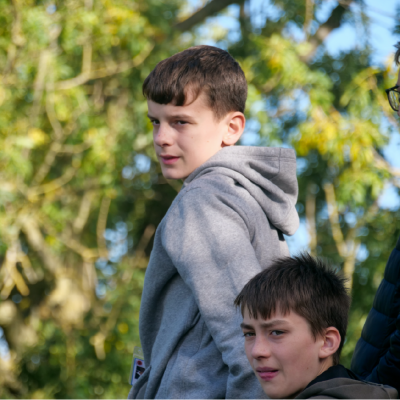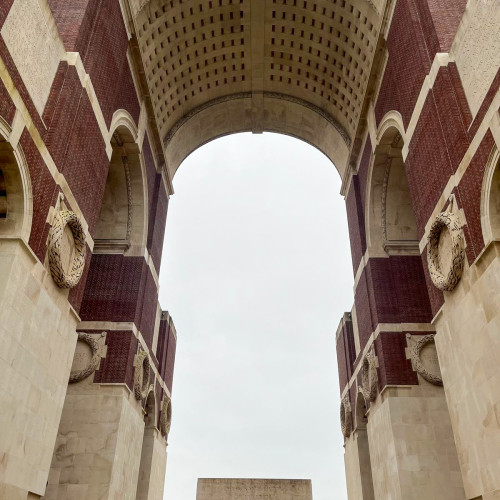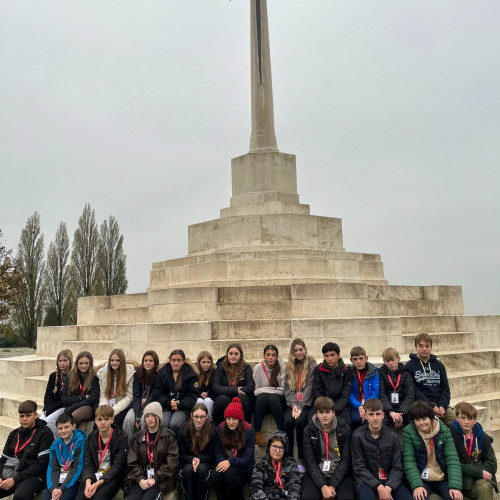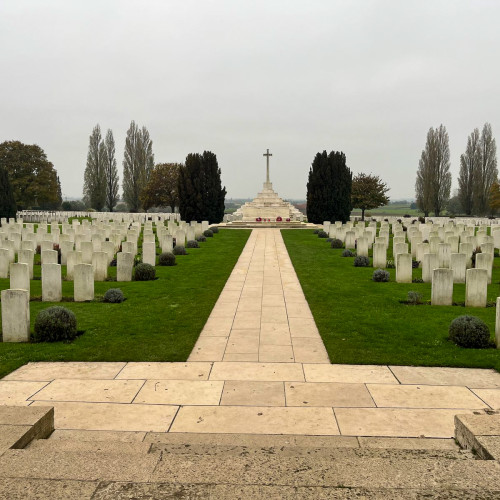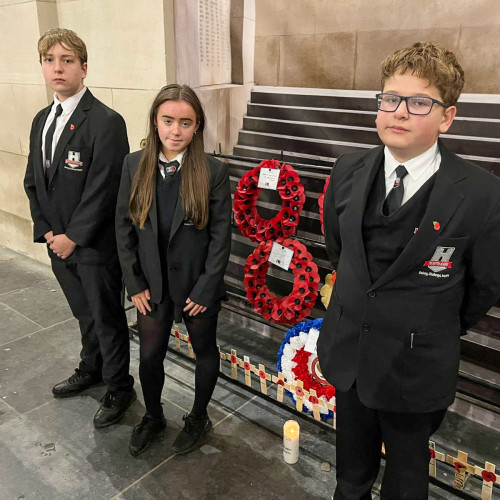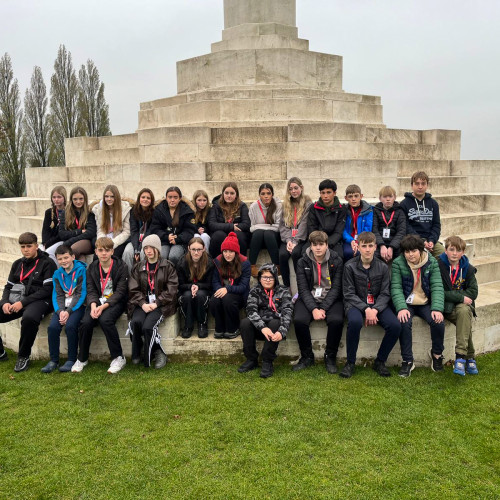From Trenches to Memorials
Students from The Skipton Academy had the exceptional opportunity to visit several historic First World War battlefields and memorials in Belgium and France. This journey was more than an educational trip; it was an immersive experience into events that shaped much of modern Europe and left a profound impact on the world. The visit brought students closer to the realities of the past and offered a perspective on the terrible costs of war, which textbooks alone cannot fully convey.
The first stop was Essex Farm Cemetery in Ieper, Belgium, where students saw the resting place of over 1,200 soldiers. This cemetery holds particular significance as the site where Lieutenant-Colonel Dr John McCrae, a Canadian physician, penned the famous poem “In Flanders Fields.” Written after the death of a close friend, this poem became one of the most iconic pieces of literature from the First World War, embodying sentiments of loss and remembrance. Students observed how the simple beauty of the surrounding poppy fields inspired McCrae, creating a poignant atmosphere that endures to this day.
Essex Farm also served as an Advanced Dressing Station (ADS) during the war, located just a short distance from the front lines. Here, soldiers received first aid before either returning to combat or being transported to field hospitals. The students from The Skipton Academy were fascinated by the resilience and resourcefulness of the medical teams who worked here under extremely challenging conditions.
The next stop was the St Julien Canadian Memorial, a solemn reminder of the sacrifices made by Canadian forces during the Second Battle of Ypres. This location is particularly notable as the site where chemical warfare was first introduced, with mustard gas drifting across the fields towards Allied forces in 1915. Without gas masks, the Canadian soldiers displayed immense bravery, holding their ground despite overwhelming casualties. This battle brought home the grim realities of war tactics and highlighted the sacrifices made by young men far from home.
At Langemark, students were introduced to a different perspective on war. Known as the “student cemetery,” this site is the final resting place for over 44,000 German soldiers, including 3,000 student volunteers who lost their lives in 1914. The dark gravestones and overhanging trees give the cemetery a distinctly sombre tone, contrasting with other cemeteries. It was a powerful lesson in understanding how both sides endured immense loss, prompting students from The Skipton Academy to reflect on the universal impact of conflict.
In the Somme sector, students explored the Thiepval Memorial, the largest Commonwealth memorial to missing soldiers. Constructed between 1928 and 1932, this towering structure bears the names of over 72,000 soldiers with no known graves. Walking beneath the arches of the memorial, students gained a sense of the staggering scale of loss that the Battle of the Somme represented.
A visit to Vimy Ridge provided insight into the contributions of Canadian forces during the war. Here, the Canadian Corps employed innovative tactics, such as the “creeping barrage,” to secure victory. The site commemorates the nearly 3,600 Canadians who died taking Vimy Ridge, a pivotal moment in Canada’s military history that became a symbol of national pride and sacrifice. Students observed that each fallen Canadian is honoured with a maple tree, a living tribute that underscores the lasting respect for those who served.
This trip left a profound impact on students from The Skipton Academy, fostering a deeper appreciation for the cost of war and the importance of remembrance. It provided them with a personal connection to the history they study in the classroom, encouraging empathy and a sense of global citizenship. Standing on these historic grounds, surrounded by silent memorials, the students were reminded of the resilience of those who endured unimaginable hardship and were inspired by the message of peace that these sites represent today.
As students returned, they carried with them not just facts and figures, but a newfound respect for history and a responsibility to keep the memory of the past alive. We thank the dedicated teachers and organisers for making this meaningful experience possible.

